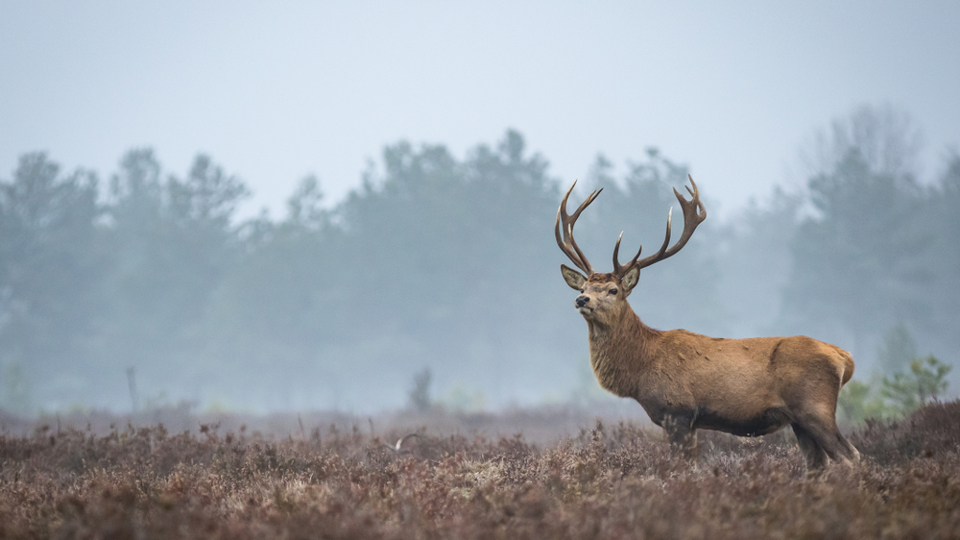Challenge of balancing Scotland's people and wilds - inside the Natural Environment (Scotland) Bill

Introduced in February 2025 and now at Stage 1 of the parliamentary process, the Bill puts forward measures to protect Scotland’s natural environment. Robert Scott-Dempster and Fiona Scott, land and rural business experts at Gillespie Macandrew, outline the Bill’s principal proposals.
The Natural Environment (Scotland) Bill forms part of the Scottish Government’s Strategic Framework for Biodiversity, setting natural restoration targets to reduce carbon emissions and protect biodiversity in Scotland. It is in large part an enabling or framework Bill and it therefore remains to be seen whether it strikes the right balance between protecting the environment and its impact on those who live and work in rural Scotland.
The Bill has four main parts:
- Part 1 provides for a duty to impose targets to improve biodiversity
- Part 2 gives power to amend laws relating to Environmental Impact Assessments and the Habitats Regulations
- Part 3 amends National Park legislation, updating the aims of National Parks and changing how National Parks are run
- Part 4 deals with deer management
Parts 1 and 4, and the regulations that will be made under them, are the parts of the Bill with the greatest likely impact on activity in the rural sector. In respect of Part 1, while individual land managers and businesses may not have the duty to comply with the biodiversity targets being set, those targets will influence future policy development and matters such as agricultural and land management support schemes.
In relation to Part 4, while the controversial Deer Management Nature Restoration Orders have been dropped following fierce sector opposition during the public consultation, the deer management proposals in the Bill contain increased powers of intervention for NatureScot, which were not consulted upon. With detail on how and when these will be exercised to be fleshed out by NatureScot via a code of practice, there is continuing concern in the sector about how the powers will be put to use and what practical changes will be felt.
Part 1: Targets for improving biodiversity
Context
Scotland has had a biodiversity strategy since 2004 but biodiversity has continued to decline in the period since then. According to State of Nature reporting, the UK is one of the most nature-depleted countries on the planet, with many wildlife species and environments in decline despite initiatives such as the Agri-Environment Climate Scheme and Nature Restoration Fund. The Bill’s Policy Memorandum states that “Scotland’s economy is fundamentally dependent on nature to supply the natural capital it needs, and to absorb its wastes, including greenhouse gases”. But it goes on to note that “historically nature has been overlooked in decision-making”.
Principal proposals
In its headline measures, the Bill looks to tackle this by amending the Nature Conservation (Scotland) Act 2004, under which the Scottish Biodiversity Strategy was created, to create binding statutory targets for improving biodiversity.
The Bill creates a framework, giving Scottish ministers the power – and duty – to make regulations to set targets under three principal headings:
- The condition or extent of any habitat
- The status of threatened species
- Environmental conditions for nature regeneration
Ministers will also be able – but not bound – to bring forward regulations on “any other matter relating to the restoration or regeneration of biodiversity”, as they consider appropriate.
The targets will be binding in a similar way to climate change targets – so if they are not met, the Scottish Government must lay statements before Parliament explaining the reasons why and setting a different target.
The detail of the targets will follow in secondary legislation. The justification is to enable targets to be more easily adapted in light of future changing circumstances but still subject to scrutiny by Parliament – regulations will require to be voted through by the Scottish Parliament, using the affirmative procedure. The targets are intended to be a mixture of outcome targets (for example, X% increase in abundance of species by Y date) and output targets (for example, X hectares of peatland restored by Y date); the latter are more easily measurable but the former allow for more flexibility of approach.
Targets cannot be set or amended without the Scottish ministers having taken independent scientific advice on them – but they can have regard to advice gathered to date in doing that.
There are three-yearly reporting requirements and the targets must be reviewed at least once every 10 years. Environmental Standards Scotland is appointed as an independent review body; it will assess (i) the three-yearly reporting and (ii) how Scottish ministers seek the independent advice, and report on those matters, with reports to be laid before the Scottish Parliament.
The Policy Memorandum acknowledges the “nature finance gap” and that investment in nature needs to be increased. Alongside public funding, it is clear that private finance – by which is included landowners and managers simply funding actions/compliance themselves – is going to have to play an increasing role.
Part 2: Environmental Impact Assessments and Habitats Regulations
Context
The Habitats Regulations are rules that derive from EU law and created designations, including Special Areas of Conservation and Special Protection Areas. These designations link to greater scrutiny and protection for these areas compared to domestic designations, such as Site of Special Scientific Interest, though often protected areas can attract all three designations.
The Environmental Impact Assessment (EIA) regime also stems from EU law and is the mechanism by which environmental considerations are assessed in certain developments. EIAs inform consenting decisions and often result in conditions being imposed in mitigation of environmental impact of works. EIAs may be required in connection with works in the agriculture (including land drainage and irrigation) and forestry sectors, as well as within the planning system.
Principal proposals
Post-Brexit, Scottish ministers lost certain powers to amend these regimes, and the Bill provides a technical fix for that.
The Bill sets out the relevant legislation and provides the Scottish Government with power to modify or restate it for certain purposes, including to:
- maintain or advance standards in relation to restoring, enhancing or managing the natural environment; preserving, protecting or restoring biodiversity; and environmental assessments;
- facilitate progress towards a statutory target relating to the environment, climate or biodiversity;
- take account of changes in technology or developments in scientific understanding; and
- improve or simplify the operation of the law, or resolve ambiguity, remove doubt and facilitate improvement in the clarity or accessibility of the law.
The ability to ‘restate’ is provided to allow for improved clarity; rather than simply modifying what is already there, it may be simpler to reformulate the wording. Complete changes of approach will not be possible.
Part 3: National Parks
Context
National Parks are governed by the National Parks (Scotland) Act 2000. National Parks are said to serve as “models of sustainable development”, with each park having a governing authority tasked with achieving its aims. Park authorities must prepare a plan setting out their policy for the management of the park and for coordinating functions between the authority and other public bodies in relation to the park. The Scottish Government has committed to designating at least one new National Park during the current parliament and views National Parks as key players in addressing the climate and biodiversity crises.
Principal proposals
The Bill updates the aims of National Parks (largely restating the existing aims) to:
- conserve, enhance and promote public understanding and enjoyment of natural and cultural heritage;
- promote sustainable management and use of natural resources; and
- promote sustainable economic social and cultural development of communities in the park.
A new subsection elaborates on these aims to include specific reference to restoring and regenerating biodiversity, mitigating and adapting to climate change, and promoting sustainable tourism and visitor management.
Scottish ministers, National Park authorities and other local authorities and public bodies must already have regard to National Park plans when exercising functions affecting a National Park. The same bodies will now also come under a duty to facilitate implementation of National Park plans, so far as is consistent with the proper exercise of their other functions. This will mean a more pronounced balancing exercise for such bodies, between their own aims and duties and those of the parks, when operating within them.
The Bill also brings in a framework to allow National Park authorities to issue fixed penalty notices for breach of National Park byelaws. National Parks can create byelaws to protect their natural and cultural heritage, prevent damage to the land and secure public enjoyment and safety. Loch Lomond and the Trossachs National Park has had byelaws restricting camping on the banks of many of its lochs since 2017 and restrictions on activities at Loch Lomond since 2023. The Cairngorms National Park is in the process of introducing byelaws on fire management with a view to reducing the risk of wildfires.
At present, breaches of byelaws require reporting to the Crown Office and prosecution through the criminal justice system. Fixed penalty notices are considered to be a more efficient and effective means of enforcement. The Bill enables the Scottish Government to create regulations to bring in a fixed penalty notice system. The maximum penalty for an offence under the regulations would be a fine not exceeding Level 2 on the standard scale (currently £500).
Part 4: Deer management
Context
Deer management is governed by the Deer (Scotland) Act 1996. Following extensive work by the Deer Working Group, the Bill proposes substantial, largely technical changes to that Act.
Deer management is considered vital by the Scottish Government in the context of climate change and biodiversity. Deer can have a significant effect on carbon sequestration activities, through grazing in woodlands – often preventing natural regeneration – and exposure of peat/soil through trampling and compacting, particularly when present in high numbers. To meet the outcomes of the Scottish Biodiversity Strategy, it is estimated that 200,000 deer will need to be culled annually, over a period of 5-10 years.
Principal proposals
The Bill takes forward a number of recommendations of the Deer Working Group including new offences around shotgun use, removal of licensing for trading in venison and alterations to the registration/authorisation system permitting the shooting of deer.
However, the Bill also goes beyond Working Group recommendations in seeking to introduce a new ground for NatureScot intervention, of “nature restoration”: if deer either prevent or reduce – or are considered likely to negatively impact – the effectiveness of any work, project or natural process that preserves, protects, restores, enhances or otherwise improves the natural heritage or environment. This supplements the existing intervention ground of damage caused by deer to, for example, woodland, agricultural production and the natural heritage or environment generally, and is understood to have been crafted with an eye to Scottish Government targets for tree planting and peatland restoration in particular.
Evidence given to the first Rural Affairs and Islands Committee stated that the nature restoration ground for intervention is a move from a reactive to a proactive system, such that action could be taken ahead of projects commencing if it were thought deer numbers in the vicinity were too high to make it viable. How this will translate into practice on the ground is a cause for concern in the sector.
The potential interventions themselves are largely unchanged, with voluntary deer management plans and control agreements the first steps, moving to enforced control schemes where voluntary arrangements are ineffective or unable to be agreed. Under the Bill, control schemes will be able to be registered against the title to the land they affect, such that they will apply even in the case of change of ownership.
The Bill is now at Stage 1, at which the lead committee, confirmed as the Rural Affairs and Islands Committee, will consider the terms of the Bill, taking evidence from stakeholders and issuing a report to the Scottish Parliament before the general principles of the Bill are debated in the chamber. A call for views has been launched, with responses to be received by Friday 9 May.
Written by Robert Scott-Dempster, Partner and Head of Land and Rural Business, and Fiona Scott, Legal Director (Professional Support Lawyer), Land and Rural Business, Gillespie Macandrew











